Last Updated: 06/05/2025
Feline FAQs
Find out the answers to some of the most common questions our Vet Squad are asked about cats!
Author: Dr Jacqui Victor BVSc MANZCVS (Medicine of Cats)
Reading Time: 1 minute - quick read
10 Bite-Sized Curious Cat Questions Answered
1. Why Does My Cat Attack My Ankles?
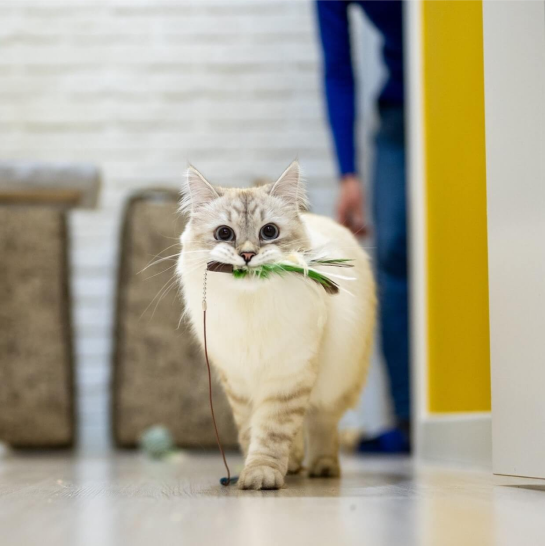
Have you ever been minding your own business, walking by your cat, and then yikes - you feel those sharp teeth or claws around your ankles?
Try not to get disheartened - this is just your cat expressing their innate hunting instinct. As cats are natural hunters, our ankles being low to the ground make them the perfect moving targets to mimic a cat's prey! If your ankles have already been ambushed, then quickly redirect your cat's attention to a wand toy to teach your cat an acceptable way to play whilst keeping your ankles safe.
To avoid becoming prey in the first place - if you see your cat hiding ready to pounce whilst you're walking down the hallway, then make sure to stop before you reach them and throw a toy in the opposite direction to you are heading. Your cat's attention will be redirected so that you will be able to walk by safely. This will also teach your cat the routine of waiting for their toy instead of your vulnerable ankles.
Make sure to provide your cat with plenty of acceptable outlets to exhibit their natural hunting behaviour so they're not tempted by you! You can do this through hunting-based toys and environmental enrichment. Games are a great way to strengthen your bond together and a great alternative outlet for your cat. Even just putting aside 10 minutes twice a day to play with your cat is a great way for them to burn some energy and prevent boredom. Regularly rotating your cat's toys every 2 weeks helps to keep your cat constantly distracted from your tempting ankles.
2. How Do I Stop My Cat From Waking Me In the Middle of the Night?
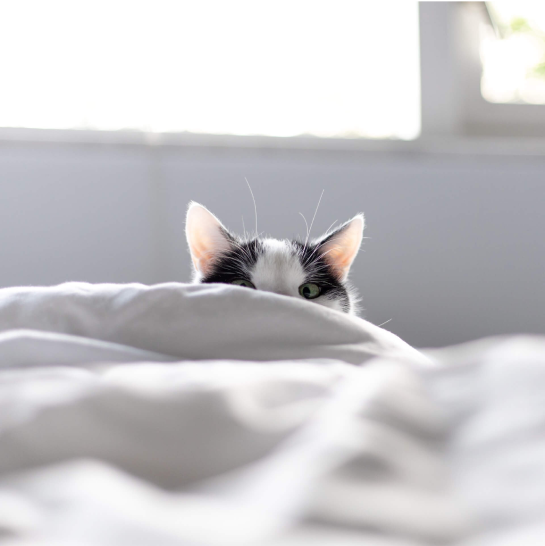
Is your cat acting as the alarm clock you never asked for? There can be many reasons why cats can be vocal through the night, but most commonly this is due to hunger or boredom. If you have a senior cat, then a vet check-up is warranted as diseases such as dementia, hypertension (high blood pressure) and hyperthyroidism (an overactive thyroid) can cause night vocalisation as cats age.
Cats are master manipulators - so if your cat has previously woken you up successfully and you have 'rewarded' them by either feeding or playing with them, then they are likely to do it again!
To ensure a good night's sleep, make sure you have provided your cat with plenty of environmental enrichment to keep them busy. Engage in a decent play session with your cat before bedtime to tire them out, and make sure to leave some toys out for them, putting them in new spots before each bedtime to keep things interesting for your cat! Quiet toys such as the Petstages Night Time Catnip Rolls are ideal to ensure you have a restful night's sleep.
If your cat is truly waking you up because they are hangry, then an automatic feeder can be your lifesaver. Set the feeder to open a small amount of food around the time your cat usually wakes you up, and you can gradually delay this time to a more suitable hour. Alternatively, you can use a puzzle feeder or try feeding a small meal just before bedtime so your cat is less likely to wake you up through the night due to (perceived) starvation.
3. Why is My Cat Sneezing?
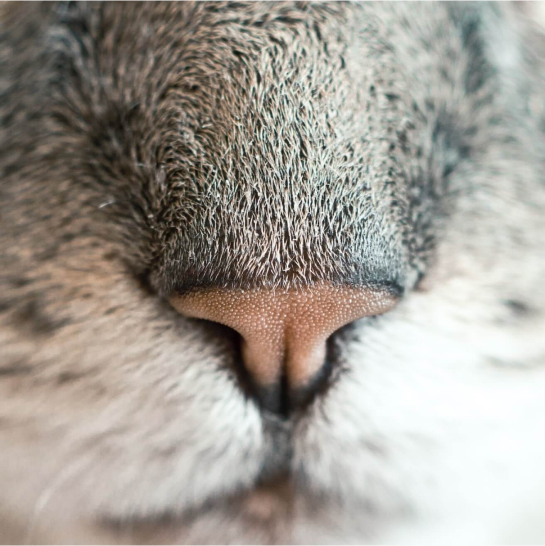
Sneezing is commonly a symptom of an upper respiratory infection in cats (commonly known as 'cat flu'). However, just like us, cats can also sneeze from irritants or allergens such as pollens, dust, cigarette smoke, scented candles, new perfumes or chemical cleaners - so make sure to remove these if you can. Outdoor cats can also inhale foreign objects like grass seeds which can lead to sneezing and nasal irritation (pawing at their nose). If your cat is sneezing, then a vet check-up is imperative, particularly if they are experiencing any nasal discharge, eye discharge, coughing, wheezing, lethargy or inappetence.
If your cat is experiencing any nasal discharge, you can wipe away the discharge twice daily with some warm salty water. This is really important to improve your cat's comfort, as well to ensure your cat retains their sense of smell which strongly associated with their appetite.
Cats that have been infected with Feline Herpesvirus (a common cause of cat flu) when they were kittens, are unfortunately likely to experience flare ups again throughout their life, usually in times of stress, and so minimising stress is important for reducing future flare ups of cat flu. My top recommendation is Feliway, which is a synthetic form of the natural feline facial pheromone which cats use to mark an area as 'safe'. Feliway helps to provide cats with a sense of security and helps to reduce anxiety, and pheromones have actually been shown to decrease stress and also decrease symptoms associated with Feline Herpesvirus. Ensuring that your home is cat-friendly is also imperative to reducing your cat's stress levels. There are so many simple strategies that you can implement in your home which will make a world of difference to your cat.
Other measures that can help include using an air purifier or humidifier. Alternatively, an easy way to increase the humidity is to place your cat in the bathroom while you take a hot shower. This can help loosen and clear out any nasal secretions. You can also use Lysine, which is an anti-viral which has been shown to decrease the symptoms and viral shedding of Feline Herpesvirus.
4. How Many Times a Day Do I Feed My Adult Cat?
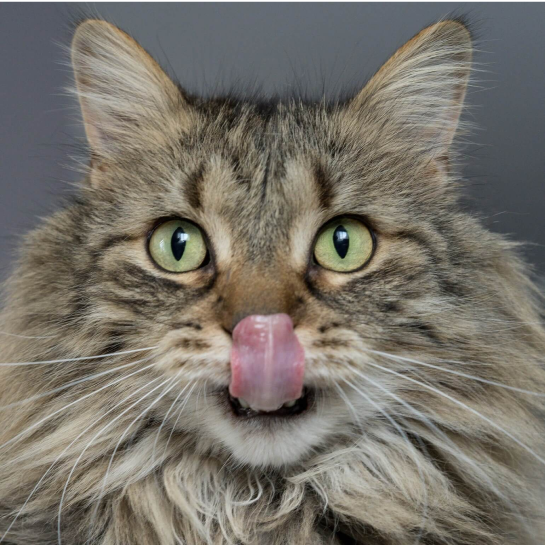
Adult cats should eat at least two meals each day, about 12 hours apart. There are different ways of feeding your cat, including feeding at set meal times, free feeding and combination feeding. Deciding which one works best for you and your cat will depend on your cat's behaviour and body weight, whether you have one or multiple cats, as well as your personal preference.
Feeding at set meal times enables you to closely monitor your cat's food intake, and identify immediately if your cat has any change in their appetite. Feeding at set meal times is suitable for both dry and wet foods. This type of feeding is useful for multi-cat households where one cat may steal another one's food, provided they are all fed separately at designated meal times. The disadvantage to this feeding method is that your cat may beg in between feeds, however you can use a food puzzle toy to keep your cat busy between meals.
Free feeding is where food is available at all times, and allows your cat to graze and eat multiple smaller meals throughout the day. Be aware that you still need to pre-measure the amount of dry food your cat will receive daily otherwise it can lead to overeating and obesity. This feeding method is suitable for dry food only, as wet food will spoil if left out throughout the day. Adequate water intake is so important for cats for their kidney and bladder health, and so if you aren't feeding wet food then you need to ensure your cat is receiving some extra water intake through other sources such as a water fountain. The other downside to this method is that it is more difficult to determine if your cat has any changes in appetite, and it is generally not recommended for multi-cat households where cats can steal other's food, or overweight cats cats who may eat everything in one go.
Many owners choose combination feeding for their cats as it provides the best of both worlds. This involves leaving a pre-measured amount of dry food freely available through the day, along with feeding wet food once or twice a day at a set meal time. Combination feeding allows your cat to eat multiple, small meals of dry food per day on their own schedule, whilst still allowing you to partially monitor their food intake.
5. Why Doesn't My Cat Like Cuddles?
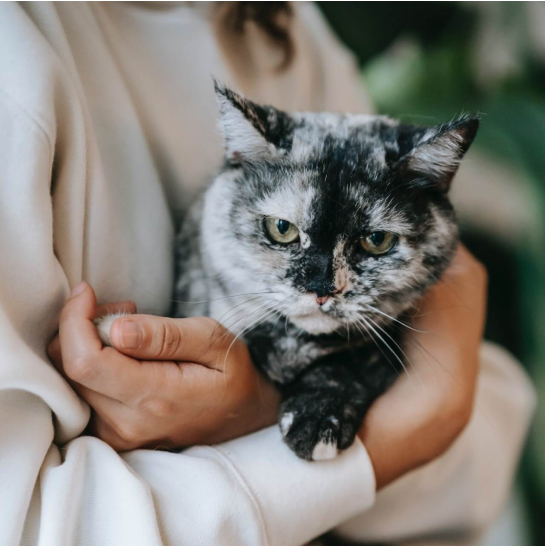
If your cat doesn't enjoy cuddles, try not to take it personally! Whilst some cats love a cuddle and will seek you out for lap time, others won't. Your cat may perceive your well intentioned loving hug as restraint and feel trapped, resulting in their instincts of fight or flight kicking in. They will either fight and defend themselves (which may result in biting or scratching) or flee (or freeze in fear if there is no escape route). This is just their natural instincts kicking in, and certainly doesn't mean they don't love you! Other ways your cat can show you they love you include smooching you, kneading you, licking you, purring, talking to you and bringing you 'gifts'.
Never force your cat to cuddle - this will not change your cat's thoughts around cuddling, and may actually worsen the bond between you two. For cats that do enjoy cuddles - remember, this should always be on your cat's terms, and you need to respect their decision when cuddle time is over. If your cat doesn't enjoy a cuddle you can still express your love for them through petting, brushing, play and treats.
Learning to read your cat's body language is so important to ensure interactions between you and your cat are positive and safe. Let your cat be the one to approach you and make sure to keep your interactions calm. Keep petting sessions short and pause frequently to make sure your cat has control over the situation. As a general rule, when patting your cat it is always best to concentrate on the 'safe areas' like the forehead and cheeks, and avoid the 'danger zones' such as the belly. As soon as your cat gives you a warning sign (eg purring stops, flattened ears that are rotated backwards, dilated pupils, twitching tail, tense body, hissing or growling), stop stroking immediately! This is your cat's way of telling you they have had enough, so it's best to give them their space by quietly removing yourself from the situation. After this, let your cat be the one to re-approach you, which they will as soon as they are ready!
6. Is My Cat Lonely? Do They Need a Friend?
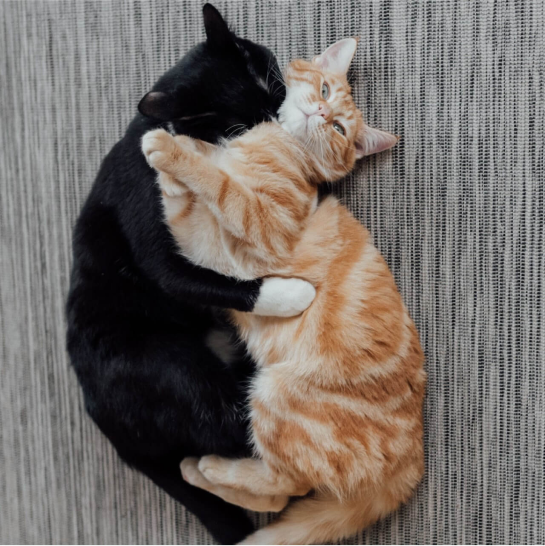
Cats, unlike humans and dogs, are a solitary species and are often happy without the company of other cats. Of course, many cats may form bonds with other cats, whilst other felines simply learn to co-exist or may avoid each other long-term. It is difficult to predict if two cats will get along, and whether your kitty wants a friend will depend on your cat's individual personality and behaviour.
If you are concerned about your cat being bored alone, make sure to provide them with plenty of environmental enrichment and puzzle toys to keep them mentally and physically stimulated throughout the day. This is particularly important for indoor cats whilst you're not home. Also make sure to check out our article 10 Must Have Cat Products For When You're Away From Home.
If you were thinking of owning multiple cats, then it's best to adopt littermates who have been raised together, and generally younger cats are more likely than older ones to accept new feline members into the household. The key to introducing a new cat to your resident cat is to do it gradually. Unfortunately there is the risk of conflict as your new cat is met with an unfamiliar environment whilst your resident cat is facing an invasion of their territory. Getting this introduction right makes a huge difference in the long run. Using Feliway will also help to decrease stress and conflict between your cats. For more information, have a read of our helpful articles Introducing a New Cat to Your Household and Reducing Stress in Multi-Cat Households.
7. Is It Cruel To Keep a Cat Indoors Only?
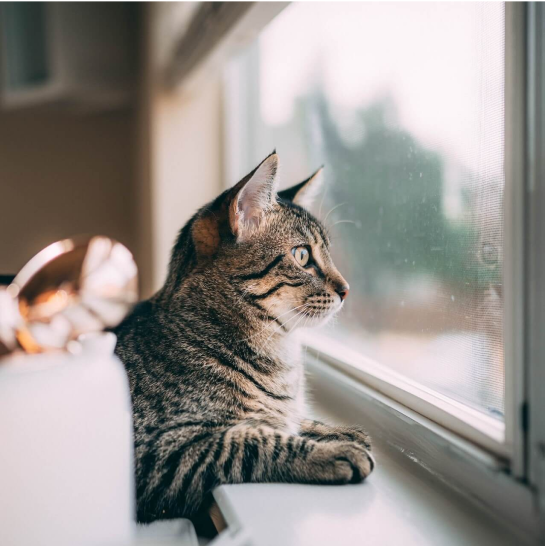
Absolutely not! In fact, an indoor lifestyle keeps your cat away from dangers such as cars, predators, other cats, parasites and disease. However, it is important for our indoor feline friends that you provide them with plenty of physical and mental stimulation, so they can still express their natural behaviours. Feliway is a useful addition to help decrease signs of stress whilst your cat adjusts to being indoors.
Environmental enrichment is very important to prevent boredom or frustration when indoors, and involves providing adequate resources including scratching posts, toys, food, water, toileting facilities and resting places. Providing your cat with a variety of different toys, as well as engaging in routine interactive play sessions with your cat will allow them to demonstrate their innate hunting instincts.
Giving your cat some visual stimulation is also great way to keep them occupied. Cats love viewing the sights of the outdoors, and as cats naturally love high resting places, using an elevated window bed is a great way for them to watch the world go by. You can even place a bird bath or feeder nearby outdoors to provide some extra viewing pleasure for your kitty. Opening doors and windows that have secure fly-wire also provides your cat with some exciting smells of the outdoors, to keep them on their paws.
Providing a secure outdoor enclosure attached to a window or cat flap, is a great way to provide some extra enrichment for your cat so they can experience the ever changing sounds, scents and smells of the outdoors. Alternatively, you can teach your cat to walk on a lead to allow them to explore the great outdoors safely.
You can also provide your cat with their own TV. There are many videos on YouTube that are designed to appeal to the sights and sounds that attract cats, and include their favourite creatures such as mice, fish and birds which help sharpen their natural predatory instincts.
8. Why Does My Cat Sleep So Much?
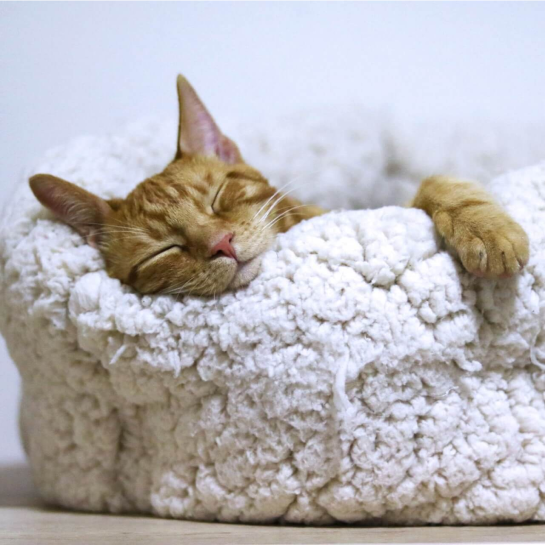
Cats have evolved to sleep for long periods of time (generally between 12-18 hours a day) as for wild cats, sleep is important to conserve energy and recharge for their next hunt and meal. Along with deep sleep, cats can doze off for short moments (from 5-30 minutes), but always remain on high alert for predators or prey.
Cats are crepuscular, being most active during the twilight hours of dawn and dusk. Their eyesight is specifically designed to maximize their predatory behaviour during these twilight hours.
Make sure that your cat receives plenty of exercise by engaging in play sessions with them, particularly in the evening during their natural hunting time.
Of course, if your cat has suddenly become more sleepy or lethargic than normal, then make sure to get them examined by a vet to rule out any illness.
9. Why is My Cat Drooling?
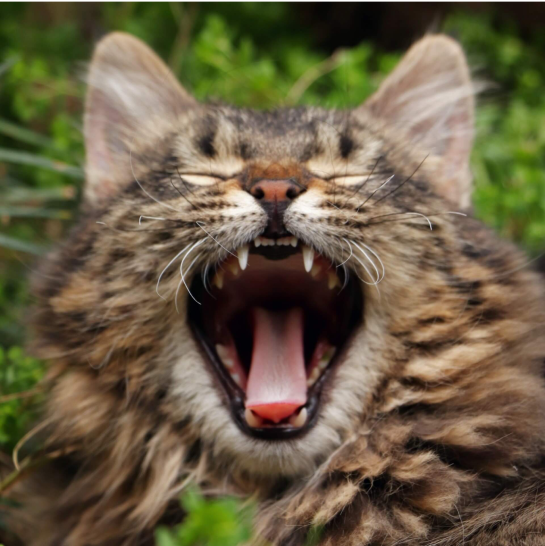
Drooling in cats can be due to numerous causes including dental disease, oral and oesophageal disease, a foreign object stuck in the mouth, teething (in kittens), tongue or jaw injuries, caustic ingestion (such as bleach), toxicities (such as paracetamol or pyrethrin), side effects of some medications, nausea and some viral infections. Some cats can drool when they are relaxed and content, or even in times of stress and fear.
If your cat has suddenly started drooling then a vet check-up is imperative. Additional symptoms that may be seen alongside drooling include blood in the saliva, bad breath, pawing at the mouth, decreased eating or drinking, swelling or mass in the mouth, swollen lymph nodes (below the jaw), gagging or coughing, vomiting, lethargy, weakness and labored breathing. Your vet will be able to perform a full examination to determine the cause of the drooling and advise appropriate treatment.
10. Why Do Cats Like Boxes?
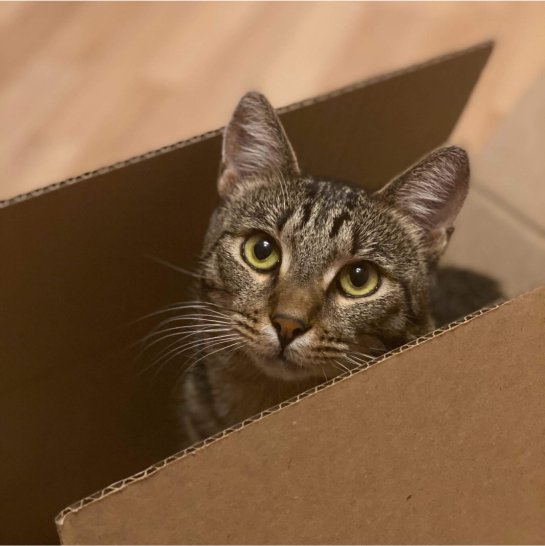
A cardboard box is a great (and cheap!) source of entertainment for cats and provides them with their very own little safe space. By design, cats like confined, enclosed spaces that protect them from any perceived threats and provide comfort. Cats are also naturally curious creatures, and so they always love to investigate a box whenever you bring a new one home ('If I fits, I sits')!
Cats love playing hide and seek, and whilst in the box your cat can rest assured that nothing can sneak up behind them. Boxes also allow your cat to express their natural predatory instinct of hiding and waiting to pounce on any prey that comes by. Cardboard also makes the perfect material for cats to scratch and bite.
A study in a Dutch Animal Shelter by the University of Utrecht has shown that cats given hiding boxes showed significantly less stress and adapted to their new environment quicker compared to cats that were not given boxes. Boxes help to provide cats with a sense of comfort and security, which is particularly important in times of stress and anxiety.
Always make sure to safely prepare any box before giving it to your cat - this includes removing any staples, rubber bands, string, packing materials and tape that could pose a risk to your cat.
Further Reading
Want to know more? Check out our Discover Page for more tips on keeping your pets happy and healthy.